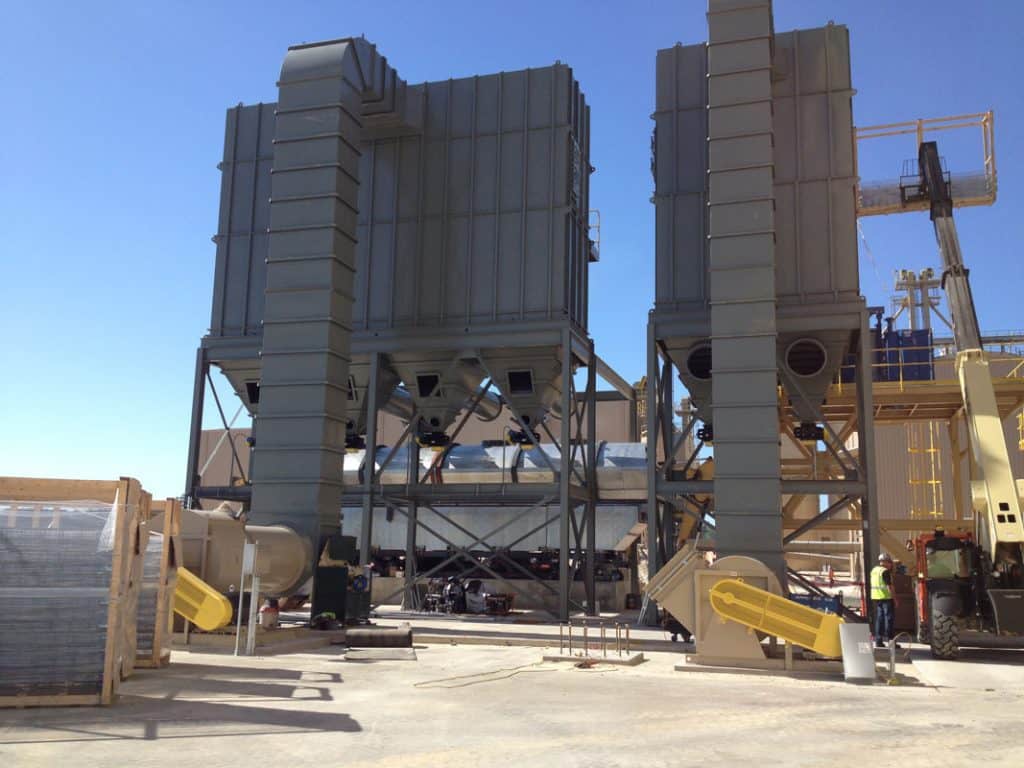Silica Dust Collection in manufacturing

Tough Regulation? Challenge Accepted.
In mid-2018, the Occupational Health & Safety Administration (OSHA) set into place the most stringent silica dust collection regulations to date. If your manufacturing process involves handling or cutting products made with sand, you know what it takes to cut permissible exposure limits, or PELs, of respirable crystalline silica in half. The standard requires manufacturers to essentially eliminate the harmful particulate from your facility – a target that’s not easy to meet.
That’s where IVI comes in. If you need help with OSHA silica compliance, our highly skilled team is proficient in designing silica dust collection systems that help manufacturers meet the regulation. Let’s accept this challenge, together.

The OSHA Silica Standard, Explained
OSHA’s silica standard helps keep workers safe, protecting them from extended exposure to respirable crystalline silica and increased risks of lung disease. When explaining the rigor of OSHA’s standard, we like to put it in a perspective that can be surprising.
Here are a few facts about the OSHA standard:
The “respirable” in respirable crystalline silica refers to the portion of the particulate that makes it past the unciliated part of the lungs, meaning our bodies don’t expel it.
That part of the dust has a median aerodynamic diameter of four microns. In comparison, a human hair’s diameter is somewhere between 50 and 70 microns.
The amount of respirable crystalline silica now allowed in a manufacturing facility is tiny—50 micrograms per cubic meter of air, averaged over an eight-hour day.
Let’s put this silica amount into perspective: You know those white sugar packets you get in restaurants? If one was filled with respirable crystalline silica, it wouldn’t meet the standard for a facility the size of a football field.
Meeting the Silica Standard
If your process includes products that contain respirable crystalline silica you first need to meet environmental controls. If those controls don’t help you meet the standard, your employees exposed to silica need to wear respirators. We can install a silica dust collection system that brings you into compliance. We’ve helped bring manufacturers into compliance with baghouse dust collectors or entire systems in various industries:
Foundries
Glass
Pottery and ceramics
Concrete
Stone
Shingle
Sand plants
Mining
If you’re unsure about how much silica dust is in your facility, the first step is to hire an industrial hygienist to take samples. The sampling is required for every employee in every area of your plant for every shift. Once the sampling is done, you’ll be armed with the information you need to determine next steps.

OSHA Silica Standard Meets Our Dust Collection Design
If sampling has shown you’re not in compliance or you know you’re not meeting the regulation, we can help in designing, building and installing a dust collection system. Here’s how we start the silica dust collection process:
- Using sampling from the industrial hygienist, we determine where the silica is being generated in your plant so we can help you effectively capture it.
- For a new system, we may use our engineering software to visualize your silica generation points and particulate size to determine the capture velocity needed.
- We will recommend dust capture design and improvements.
- We design baghouses, ductwork and hoods that meet your system’s operating parameters.
- A complete silica dust collection system build and installation helps you eliminate exposure to hazardous particulates and reduces your housekeeping.
How Makeup Air Systems Can Help
Silica exposure can worsen without a makeup air system. As air is removed from your plant through the ventilation system, that air needs to be replaced. If you don’t have a makeup air system, fresh air will find its way in—through cracks or doors. As these drafts combine with particulate on your floors and equipment, silica exposure may increase. At IVI, we’ve seen the benefits of a makeup air system firsthand and can design one to match your needs.
Our Promise
What we design will be based on your manufacturing process, particulate and facility size. When it comes to helping you be compliant, we don’t believe in one size fits all. There is no doubt—the standard is tough. But, with IVI’s highly trained design team on your side, you can meet it.
Are you ready to meet the OSHA silica standard?
Let us help. Ask about how our silica dust collection design can bring you into compliance.
"*" indicates required fields